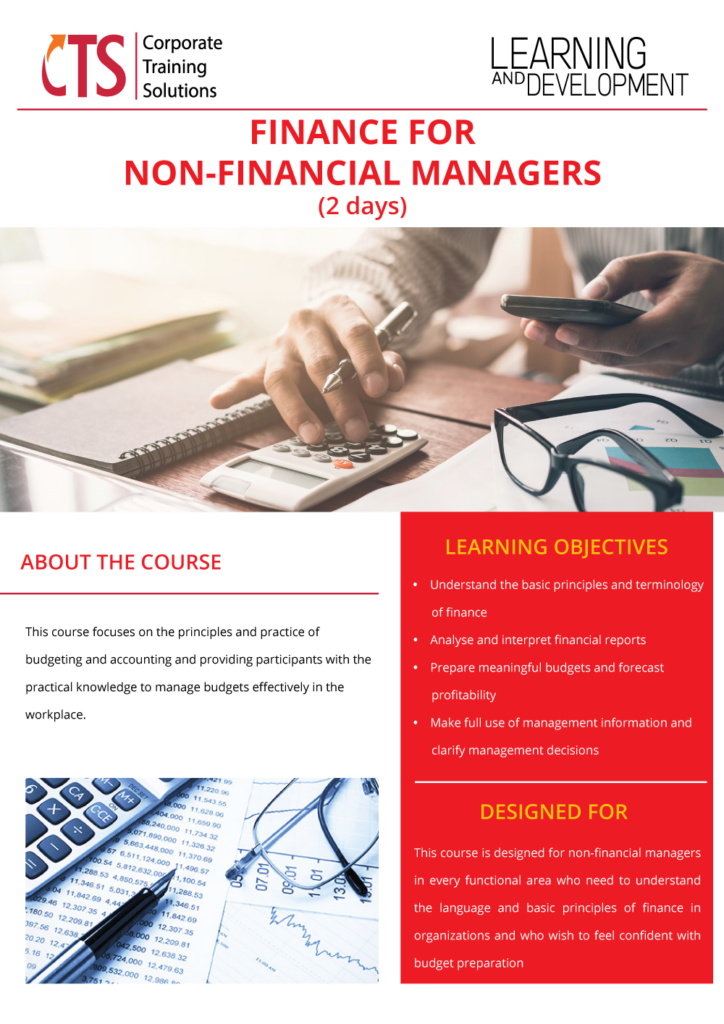INTRODUCTION TO THE PRINCIPLES OF ACCOUNTING
• Overview of how accounting structures started and how they developed
ACCOUNTING TRANSACTIONS
• Gain an appreciation of double entry accounts and how they work
• Understand the names and functions of all the essentials including: turnover, revenue, profits,
balance sheet, liabilities, income statement and cash flow
INTERPRETING ACCOUNTS
• Make sense of whole documents and create a story from them
• Spot which areas of business are not performing and why that might be
• Understand profit and loss accounts
• Establish the difference between fixed and current assets
• Understand how depreciation impacts your accounts
• Look at company accounts and look for trends in the data to make sense from them
BUDGETS & BUDGETARY CONTROL
• Learn what a budget is and how to construct one
• How to control against a budget once it exists and what can be done if you realise your actuals (what really happened) does not match the forecast
• Practice more finance speak and get comfortable with creating budgets
MANAGEMENT ACCOUNTING & PERFORMANCE MANAGEMENT
• Speak the language of business properly
• You will discuss profit and margins and how to decide if a business is performing well or not. You will use various tools to manage performance
• Learning tools to help you assess your own financial performance
FUNDS MANAGEMENT AND CASH FLOW FORECASTING
• Understand why cash forecasting is so important
• Learn the basics of fund management
• Experience the type of decisions needed when managing funds and you will see the problems associated with forecasting cash flow
COST BENEFIT ANALYSIS
• Understand an often used tool in management.
• Show how good a proposal is in terms of what it will cost against the benefits it brings.
• Tangible and intangible benefits are discussed
• Learn how to do a cost benefit analysis
LEARNING TOOLS
- Balance sheet, Profit & Loss Statement
- Cash Flow statement and Notes to financial statement
- Key financial ratios
- Actual financial statement
- Budget format




